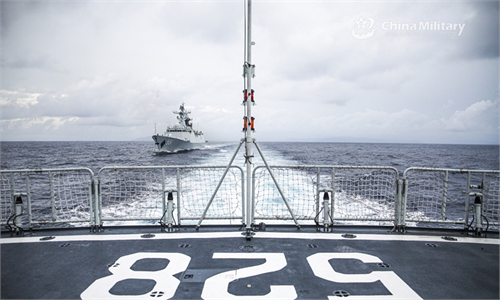BEIJING: The Chinese People’s Liberation Army (PLA) recently conducted an anti-submarine exercise that stretched for more than 40 hours and featured more than a dozen groups of anti-submarine patrol aircraft in the South China Sea, which is a region experts said is infested with foreign submarine activities that potentially threaten China’s national defense.
A naval aviation regiment and a submarine detachment affiliated with the PLA Southern Theater Command recently conducted a long-endurance, non-stop exercise on searching and attacking submarines in the South China Sea, the PLA Southern Theater Command said in a press release on Tuesday.
During the exercise that examined the crews’ skills and tactical capabilities, Y-8 anti-submarine patrol aircraft carried out searching, identifying, attacking and tracking of submarines under single or multiple known variables, according to the press release.
The exercise presented a combat scenario in which the anti-submarine patrol aircraft and submarines confronted each other in a realistic manner.
By focusing on multiple time periods including small hours and daybreak, the crews were able to garner more experience in dealing with hydrological and geographic environments in water at different times of the day, gather combat data, and hone the force’s all-weather aviation anti-submarine warfare capabilities, the PLA Southern Theater Command said.
Anti-submarine warfare is a very challenging task, and such an extensive, nonstop search is a common practice to find submarines hidden in the vast sea, Song Zhongping, a Chinese military expert and TV commentator, told the Global Times on Wednesday.
The depth of the South China Sea means that it is suitable for submarine operations, and it has already become infested with submarines from not only countries in the region like Vietnam, Malaysia and Indonesia, but also countries from outside of the region like the US and Japan, Song said.
An example exposing intensive submarine activities in the South China Sea is the US Navy’s Seawolf-class nuclear-powered attack submarine the USS Connecticut’s collision with a seamount in the South China Sea in October 2021.
The AUKUS trilateral security pact among the US, Australia and the UK is also planning to send more nuclear-powered submarines to the South China Sea and build new ones for Australia in an attempt to militarily contain China.
The PLA now has a selection of anti-submarine equipment, including surface vessels, anti-submarine patrol aircraft and anti-submarine helicopters, giving it multiple means to carry out anti-submarine missions, Song said.
China has become one of the leading countries in anti-submarine technology, and it is important for the country to put its anti-submarine forces through the most challenging training to test and enhance their capabilities, Song said.





















